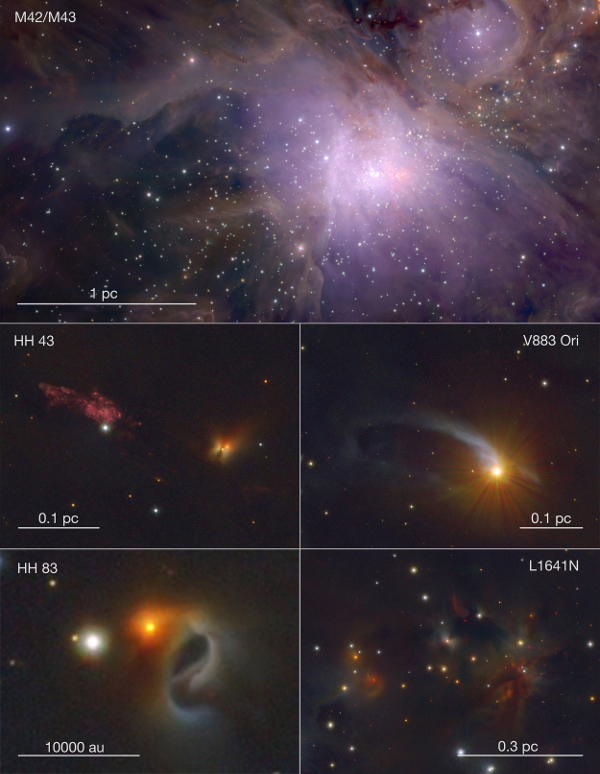| EPoS Contribution |
|
VISION - Vienna survey in Orion
Stefan Meingast IfA, Vienna, AT | |
| As the prime laboratory for research into the origin of stars and clusters, the Orion star forming region hosts a multitude of physical conditions. While the Orion nebula cluster is the nearest massive star forming region, the rest of the parental dust cloud is subject to much less dedicated studies. Understanding the clustering of YSOs and their properties in the context of the entire region and connecting these to the dense gas mass distribution will provide fundamental clues with respect to their origin. The Vienna Survey in Orion (VISION) is a major step towards a complete picture of this region. In this talk, I will present the most detailed NIR observations of the entire Orion A molecular cloud, done with ESO-VISTA, covering 18 sq deg of sky and using a new dedicated pipeline that provides an image quality improvement of about 20% over the standard ESO pipeline. VISION will aid in fundamental questions ranging from better YSO characterization to identification of individual clusters and their interconnection with the dense gas mass distribution. We find a clear imbalance on the star formation activity along the cloud, and conclude that the likely cause for this is feedback from the massive young stars in the foreground to the cluster. Combining VISION with APOGEE data in another upcoming publication we show that stars born in groups retain the original gas velocity of their parental clouds. We will also present results on the full characterization of the clustering properties of YSO throughout Orion A, addressing long standing issues on the clustered vs. isolated star formation. | |
 | |
| Caption: Prominent regions in Orion A from the VISION survey | |
| Collaborators: J. Alves, IfA, AT A. Hacar, IfA, AT |
Key publication
Suggested Session: Cluster Formation |

